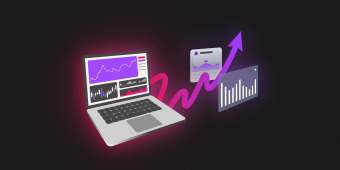To build a tool that worked for our client, we had to both create something capable of doing complex analysis and convince analysts to use it. To achieve both, we relied on the product innovation principle of building iteratively, seeking input from end users at every step.
This principle was perhaps best illustrated by our use of iterative feedback and co-creation throughout the project. We met with teams of users and stakeholders from the consultancy at least three times per week to gather information and test prototypes. Because of the technical sophistication of the project, we relied on internal experts (including PhDs in econometrics) to explain the domain to us, then synthesized their information into the designs and prototypes we presented to them for feedback.
This process of co-creation and making tangible artifacts based on what we were hearing enabled us to get in alignment with consultancy users and stakeholders and make product strategy decisions. The close partnership also helped build buy-in and mutual trust.
On a product level, our close collaboration led to several key decisions about the product:
Ingestion of multiple data sources: To deliver all the necessary functionality in one tool, we had to figure out how to best ingest, parse, structure, and visualize vast amounts of data from different sources.
Transparency of calculations and assumptions: To win users’ trust, we had to find ways to show elements of the work going on “in the background of the tool” so users could follow along as they can in Excel.
Data-powered storytelling: Throughout the project, users were adamant about being able to download certain visualizations to use in PowerPoint. We saw this request as an opportunity to learn more about their process––specifically, how they organized a narrative when presenting to clients. Using their answers as a jumping-off point, we developed a dashboard that let them explore in real-time, thanks to technology powered by automated background calculations.
Predictive analytics: Our solution combined company-specific information with simulated economic trend modeling to show how a given scenario would affect a company’s financial performance. It also facilitated testing the impact of different responses a company might take.
As we built and tested prototypes, we worked with stakeholders from different disciplines to ensure our tool balanced robust functionality with overall performance. We discussed tradeoffs like in performance and functionality––e.g., “is it worth showing these two graphs on one page if it takes more than five minutes to update?”
These conversations helped ensure we were building a tool that struck the right balance of complex, engineering-intensive calculations on the backend and engaging visualizations on the front end.








